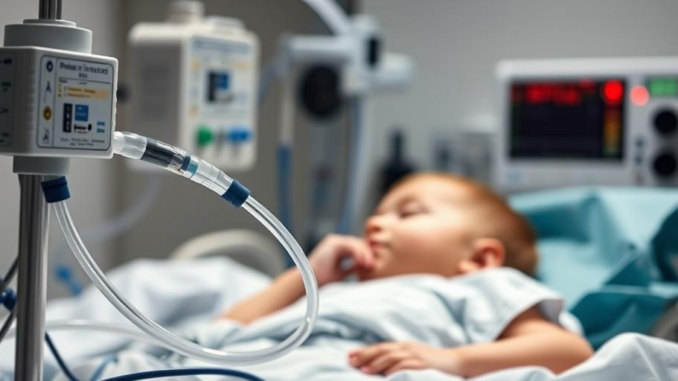
Summary
Medtronic’s Crescent RA jugular dual lumen catheter receives CE marking, a significant advancement in pediatric ECMO therapy. This innovative device offers a right atrial design and dual functionality for enhanced blood flow and stability, potentially revolutionizing treatment for young children with acute respiratory failure. The CE mark signifies adherence to European safety standards and paves the way for broader access to this life-saving technology.
Secure patient data with ease. See how TrueNAS offers self-healing data protection.
Main Story
So, Medtronic just dropped some exciting news: their Crescent RA jugular dual lumen catheter snagged a CE marking. For those not in the know, that’s a big deal, particularly for young kids battling serious respiratory failure. This thing could really change the game when it comes to ECMO therapy. The CE mark basically gives it the green light to be used across European healthcare systems, so they can rest assured its safe and effective!
What Makes the Crescent RA Special?
What’s cool about the Crescent RA catheter is its dual lumen design. It’s like, instead of using two separate lines, it does both venous drainage and reinfusion through the jugular vein all at once. Think of it like a high-speed, two-way street for blood. This makes the blood flow during ECMO way more stable and efficient, which is super critical when you’re dealing with critically ill kids. Plus, it’s designed to sit in the right atrium, which further optimizes blood flow. It’s all about getting that blood moving smoothly, which is so important during treatment.
And it’s not just about the dual lumen design, though. They’ve packed it with features to boost safety and performance. Here are a few things that stand out:
- Radiopaque markers: These let doctors see exactly where everything is during the procedure. Precision is key, you know? It minimizes risks and makes sure the catheter’s placed perfectly.
- Crescent-shaped lumen and large reinfusion port: These guys work together to keep the blood flowing smoothly under pressure. It’s all about efficient circulation.
- Multiple suture points: These keep the catheter stable, so it’s less likely to twist or move around if the patient moves. Trust me, you don’t want that happening!
A Lifeline for Kids in Crisis
Look, ECMO is a serious intervention. It’s what you turn to when a patient’s lungs just aren’t cutting it. The Crescent RA catheter is specifically meant for those pediatric cases of acute respiratory failure where veno-venous ECMO is needed and, really, where everything else has been tried and failed. It’s a lifeline for these kids, offering a solution when they’re facing some of the most life-threatening conditions imaginable. Remember that little girl, Lily, that our team worked with last year, she needed ECMO after a bad bout of pneumonia? It’s a testament to the importance of having advanced medical technology.
Looking Ahead
Getting that CE mark for the Crescent RA catheter? That’s not just a win for Medtronic; it’s a win for pediatric medicine, period. It’s going to improve outcomes for these young patients. And as Medtronic keeps pushing the envelope with extracorporeal life support, I think we’ll see even more breakthroughs. It’s a real testament to how medical technology can make a difference and give hope to families during tough times.
But it isn’t just about this one catheter; it’s a whole wave of medical innovation. We’re talking telemedicine, AI, gene editing, even nanotechnology and 3D printing! These technologies are changing how we diagnose, treat, and manage diseases. Think about it: wearable sensors that track your vitals, brain-machine interfaces helping people regain lost function. These innovations are making healthcare more accessible, personalizing treatment plans, and helping people live longer, healthier lives. You know? The Crescent RA catheter is just one example of what’s possible. It’s an exciting time to be in this field, isn’t it?


Given the significance of the CE marking for broader access, what considerations are involved in ensuring equitable distribution and access to this life-saving technology across diverse healthcare systems in Europe?